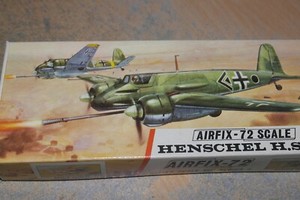

Number produced: 841 B-Series (879 total)Įngines: Two 14-cylinder Gnome-Rhône 14M 04/05ĥ51 lb of bombs, 2x 7.92mm Machine-guns, 2x 20mm cannons. With massed formations of Soviet armor penetrating deep behind German lines, urgent priority was given to the Hs-129's production.

With the new gun, the Panzerknacker could destroy any armoured vehicle in the field! A sophisticated hydraulic system absorbed the massive recoil of the gun.ĭespite this, however, the cannon would slow the aircraft down to dangerous stall speeds after firing more than three rounds! The cannon was fed from an ammunition bin behind the cockpit. The 7.5cm gun was fed by an auto-loader system with initially twelve rounds, which was later expanded to 26 rounds. This tank looks weirdFrom time to time i enjoy it to build aircraft models, it was time again to have a look at the 'dark side'.The Hs 129 is one of my favo. The 3.7cm cannon pod was replaced with the 7.5cm gun from a Panzer IV! Another version replaced the 3cm cannon pod with an array of four additional 7.62mm machine guns, for a total of six machine-guns and two 20mm cannons.īy 1944, it was apparent that the 3.7cm cannon was too old for tank-busting duty, and the Hs 129B3 received a massive firepower upgrade. With these engines, the Hs 129B2 was equipped with two 7.92mm machine-guns and two 20mm cannon in nose. After the fall of France, German engineers fitted a pair of French Gnome-Rhône 14M radial engines and the Hs 129 Panzerknacker began its stunning military service career. The first variants of the Hs 129 proved to be underpowered. This article appeared in the February 2022 issue of WWII magazine.Following its involvement in the Spanish Civil War, the Luftwaffe, or German Air Force, decided that it needed a purpose-built close ground-attack aircraft.Ī Henschel design eventually won the contract and the Hs 129 ‘Panzerknacker’ (or, ‘Tank Buster’) entered service in December 1941. 1,624 ft/min 2,067 ft/min Burst/sec 3.37 kg 5.16 kg Arms 2 x 7.92 mg 1 x 7.7 mg 2 x 20mm can 4 x 20mm can Comparing the two, the HS-129 is absolutely spanked by the Beau VI.

The cannon could knock out any tank then in production, but this was a case of too little, too late-only 25 B-3s were delivered to the field, and they were unable to swing the balance of power toward the faltering German war machine. HS-129 Beaufighter SPEED 199 mph 333 mph MAX ALT 24,600 ft 26,568 ft TURN TIME 27.9 sec 23.7 sec R.O.C. The airplane proved itself particularly effective at destroying Soviet tanks, even though its extensive armor and armament made the Hs-129 heavy for its engines, producing a slow and clumsy ride.Īs the war progressed, and the Soviets applied heavier armor to its tanks, the Hs- 129’s firepower was upped, culminating in the B-3 model of June 1944 (below), which featured the massive 75mm BK 7,5 cannon, World War II’s most powerful forward-firing aircraft weapon. Vintage 1983 ESCI ERTL TANK HUNTER Hs 129 1/48 Factory Sealed. Heavily armored around the nose and cockpit, the Henschel Hs-129 made its first appearance in 1942 and was deployed to the Eastern Front. IN THE LATE 1930s, Germany-taking lessons from its participation in the Spanish Civil War-began developing a ground-attack airplane to take on well-defended troops and armor, bucking the post-WWI prevailing wisdom that low-flying attack aircraft were especially susceptible to enemy machine gun and rifle fire. This German Plane Was Clumsy and Slow-But Somehow Earned a Rep as a ‘Tank Buster' | HistoryNet Close


 0 kommentar(er)
0 kommentar(er)
